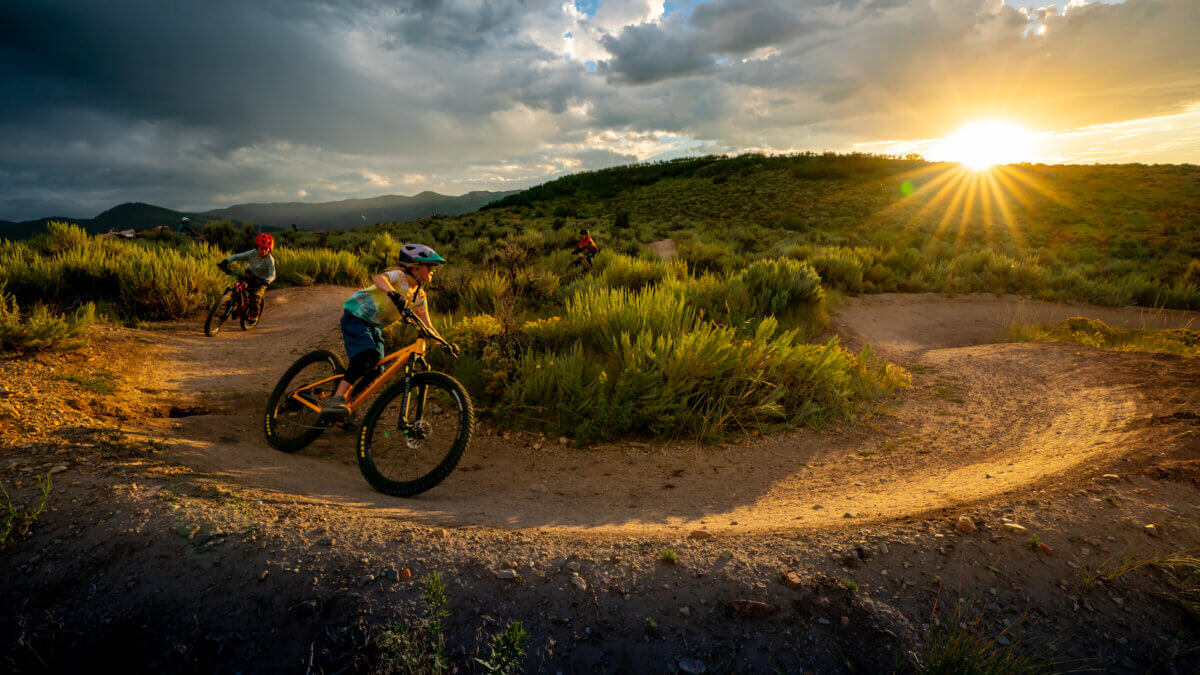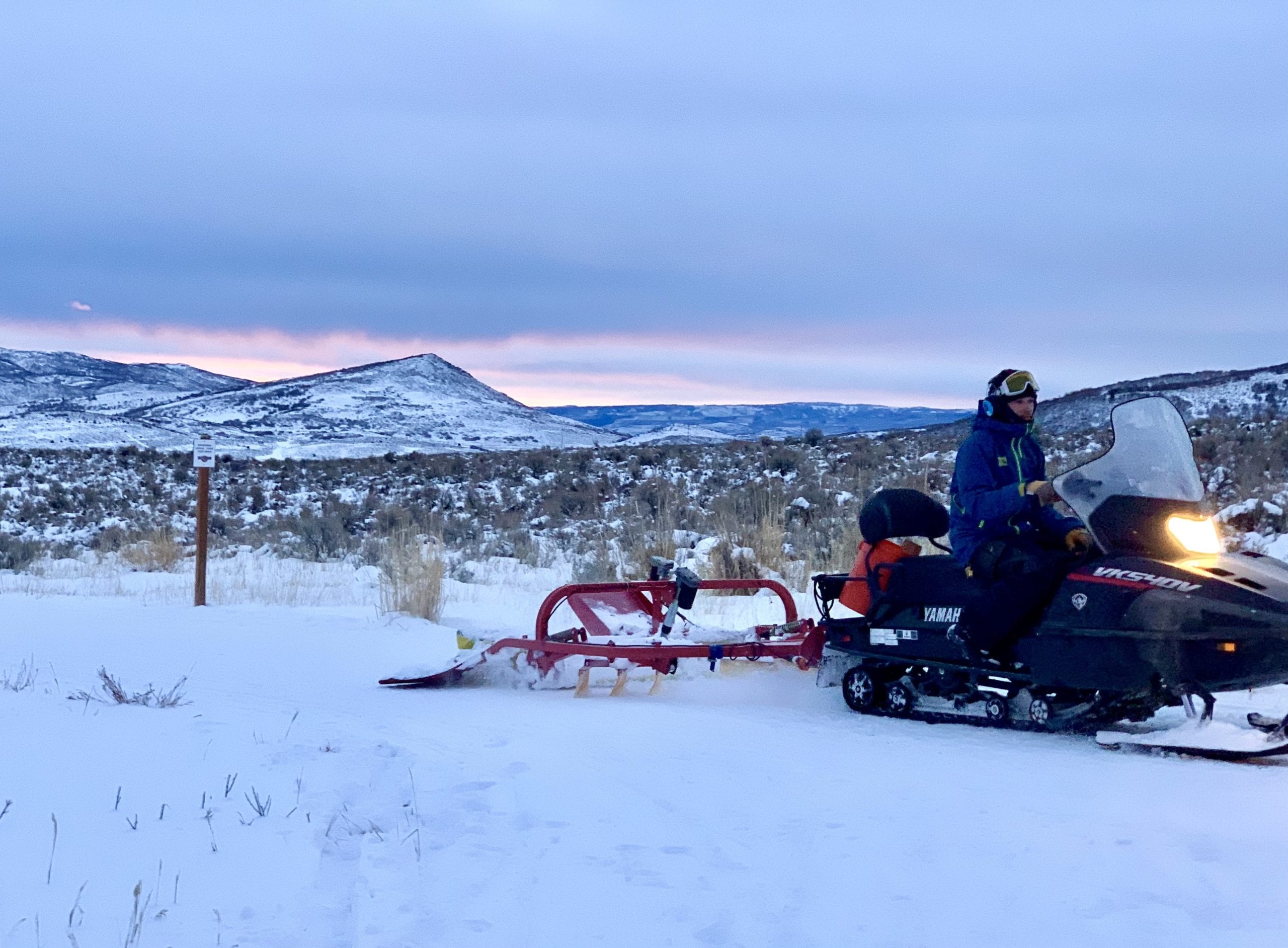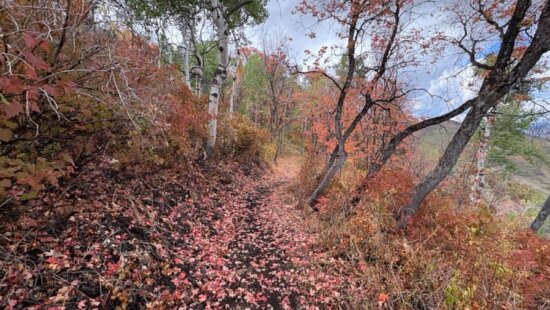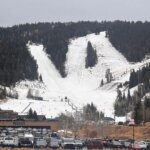History
How pirate trails and local grit built Park City’s 400-mile trail network

Riders carve through Park City’s singletrack at sunset, part of the 400-mile trail network whose origins local writer Linda George and filmmaker Ross Downard are documenting in a new collaborative project with the Mountain Trails Foundation. Photo: Ross Downard
PARK CITY, Utah — A local writer and filmmaker are collaborating with the Mountain Trails Foundation to tell the story behind Park City’s extensive trail network and the people who helped create it.
Local resident Linda George has hiked, biked, and skied the hundreds of miles of trails in Park City. A few years ago, her curiosity began to stir.
“I wonder what some of these names are from,” George reflected. “Some are pretty obvious, but others — like Rob’s Trail, Colin’s Trail, and Dubois — made me think, who are they named after?”
This curiosity sparked a multi-year project that now encompasses two mediums: a trail history guidebook and a 39-minute documentary film from filmmaker and photographer Ross Downard. Working alongside the Mountain Trails Foundation, they are capturing the stories of early builders, the struggles for access, and the renegade spirit that continues to shape Park City’s trail culture.
A Community-Built History
George and Downard started by recording oral histories, interviewing trail pioneers such as Charlie Sturgis, Sally Elliott, and Jan Wilking. What she discovered was not the tale of a single hero, but rather a collective narrative.
“It was this incredible community effort,” Downard said. “Everyone wanted it to happen — the timing was right, and people were willing to go against the grain to make it work. Developers weren’t interested in public trails through private property, but this small group pushed to ensure that every new project included them. That changed everything.”
These early advocates helped write trails into the town code and reshaped Park City’s relationship with open spaces. What began as “pirate trails” — unpermitted routes built by local riders in the 1980s — evolved into a connected system of more than 400 miles of official paths linking neighborhoods, resorts, and ridgelines.
“The connectivity is what makes Park City different,” Downard noted. “Other mountain towns have great riding, but here, everything is interconnected. That came from collaboration — from the city council to the resorts to the people out digging.”
Naming the Landscape
As they continued their interviews, George found significance in the trail names themselves. Some reflect local mining history, others honor trail builders, while others tell stories of resistance and humor.
“Troy Duffin, one of the early trail builders, named trails in a way that reflected the situation at the time,” Downard said. “Round Valley almost became a golf course and shopping district. At a public meeting, someone asked what would happen to the elk herd that lived there, and the developer said, ‘If there are elk in Round Valley, they don’t belong there.’ That statement killed the project. So Troy named the trails ‘Nowhere Elks,’ ‘Somewhere Elks,’ and ‘La Dee Dah.’”
Another trail, named Princess Di, was inspired by a developer’s ill-timed remark about keeping the public out of a gated community. “He said, ‘What if Princess Di came to visit?’ She had already passed away,” Downard recalled. “So Troy named the trail after her.”
For George, these stories enrich how she appreciates the landscape, and “I hope the guidebook gives people more context,” she stated. “There’s so much history, humor, and care behind this — every trail carries a bit of that.”
Preserving a Maverick Spirit
Downard has been documenting Park City’s landscapes for two decades, collaborating with resorts, the city, and the Mountain Trails Foundation, which helped initiate the project. His current challenge is to weave together archival footage — some from early 1990s Deer Valley commercials, and others from local riders’ home videos — into a modern narrative about identity and stewardship.
“It’s a history film, but also a reflection of what makes this place unique,” he explained. “I’m trying to balance that renegade spirit — the pirate trails and rule-breakers — with the respect and care that define today’s trail community. It’s part of our DNA. That’s how the trail system started, and it still drives it.”
He describes Park City as a town filled with intentional outsiders: “People come here because of passion. They don’t fit in a cubicle. It’s a maverick town, and the trails reflect that — always have.”
Both works are planned as fundraisers for local trails. The film is set for completion by the end of the year, with a local premiere soon after. George’s written archive, which includes historical maps and articles, will be housed at the Park City Museum for public access, and her guidebook is expected to be released next year.
Both creators assert that the project has unveiled a more profound truth about Park City — that its celebrated trail network represents not just recreation, but also resistance, reinvention, and legacy.
“Trails change, reroute, and evolve — but they don’t go away,” Downard said. “That’s the story we’re trying to tell.”



















